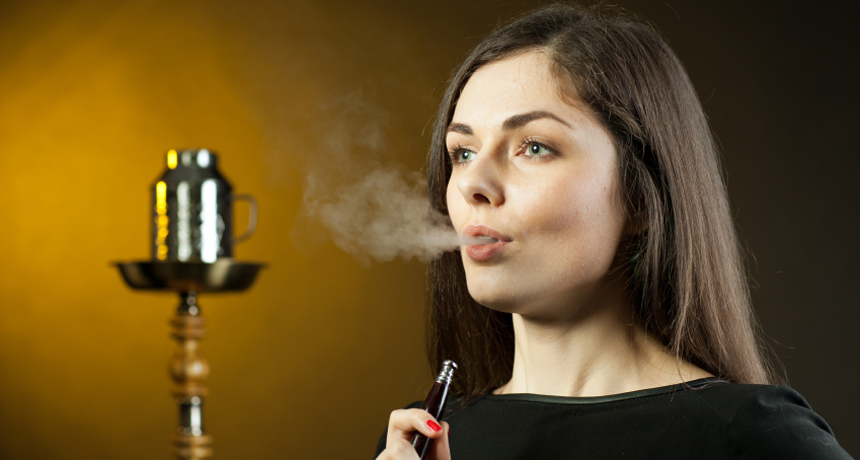Explainer: What is a hookah?
Many teens are turning to water pipes as an alternative to conventional cigarettes

Many teens are turning to hookahs as an alternative to cigarettes. But hookah products contain many of the same toxicants that are in cigarette smoke, research shows.
Ihar_Palitanski/iStockphoto
Many teens think they’ve found a safe alternative to cigarettes in hookahs. Its use has been trending among teens and young adults. In fact, research shows, hookah smoking is anything but safe.
Hookah is an Arabic word for a type of water pipe. People have used hookahs for 400 years, mainly in the Middle East. They inhale tobacco smoke — often flavored — through a special instrument. It includes a bowl, or basin, that holds water. Drawing air through the mouthpiece heats the tobacco. The flavored smoke then travels through the pipe and the water. In a recent study of 105,000 U.S. college students, hookah use was close to cigarettes in popularity.
But there is a dangerous myth that hookahs are safe, notes Thomas Eissenberg. He’s an expert on tobacco products at Virginia Commonwealth University, in Richmond. Many young people think that a hookah’s water filters dangerous particles out of the smoke. In fact, he says, the water only cools the smoke.
So when people inhale hookah smoke, they get all of its potentially dangerous compounds. “Hookah products contain many of the same toxicants that are in cigarette smoke — in fact, in some cases to a much larger degree,” says Eissenberg. This includes carbon monoxide. It is an invisible — and toxic — gas. Hookah smoke also contains polycyclic aromatic hydrocarbons (PAHs). These include some of the same cancer-causing chemicals present in vehicle exhaust and charcoal smoke.
What’s worse, people tend to inhale far more of these toxic compounds from a hookah than from a traditional cigarette. That’s because a hookah puff is about 10 times larger than a cigarette puff. And a hookah smoking session typically lasts about 45 minutes. That is compared to the five minutes that most smokers spend puffing on a cigarette.
To understand how much filthy smoke someone inhales during a 45-minute hookah session, Eissenberg says to picture a two-liter bottle of cola. Then imagine 25 of those bottles — all full of smoke. That’s what passes into a hookah smoker’s lungs.
“That smoke is laden with carbon monoxide and with other toxicants that we know cause disease, including cancer and pulmonary disease,” says Eissenberg. (Pulmonary refers to the lungs.) And the heavy metals present in hookah smoke can trigger damage to cells of the body, including those in the lungs.
So, Eissenberg concludes: “It is an absolute myth that the smoke from a hookah is less dangerous than a cigarette. And, in fact, given the volumes that you’re inhaling, it’s quite possible that hookah smoking is potentially more dangerous than cigarette smoking.”
Those risks have caught the attention of public-health officials. They are now preparing laws to regulate hookahs, along with e-cigarettes. That could lead to new restrictions on advertising and sales that match those already in place for traditional tobacco products such as cigarettes.
Update: In 2016 the U.S. Food and Drug Administration extended its regulation of tobacco products to include hookah products. The agency now regulates the production, labeling, advertising, promotion and sale of hookah waterpipes, flavorings, charcoal and many other products used during hookah smoking.







